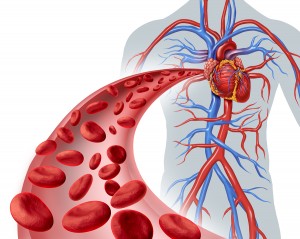Dr. Frank Hu and colleagues have recently re-examined the old question of whether sugary soda drinks make you sick. They usually contain high fructose corn syrup, a mixture of 55% fructose and 45% glucose. This sugar mix can be found in sugary soda drinks as well as in many processed foods like fruit spreads. Dr. Hu’s publication is listed in PubMed , but details can be found in this summary.
The study found that one or two cans of sugary soda drinks per day lead to
- As high as a 26 percent greater risk of developing type 2 diabetes,
- A 35 percent greater risk of heart attack or fatal heart disease, and
- A 16 percent increased risk of stroke.
Difference in metabolism between fructose and glucose
The study also found that there is a difference of how glucose, the main sugar that the body uses for energy is metabolized versus fructose from high fructose corn syrup or the breakdown of table sugar, a disaccharide consisting of glucose and fructose combined as one molecule. Glucose gets directly absorbed from the gut into the blood circulation and with the help of insulin gets further absorbed directly into body cells. In contrast the liver metabolizes fructose into triglycerides, which can cause fatty liver disease and insulin resistance. Fructose also raises the bad cholesterol (LDL cholesterol). This in turn is a risk factor for developing diabetes, heart attacks and strokes.
It is fructose in sugary drinks and processed foods that are largely responsible for weight gain, metabolic syndrome, diabetes and cardiovascular disease.
The newest finding: heart failure can also be caused by high fructose corn syrup
A study in Sweden has recently shown that sugary drinks can cause heart failure. Researchers followed 4200 Swedish men for 12 years in regard to their food habits. The study found that the men who drank at least two sweetened drinks per day had a 23% higher risk of developing heart failure. Dr. Susanna Larsson, a co-author of the study, said: “The takeaway message is that people who regularly consume sweetened beverages should consider limiting their consumption to reduce their risk of heart failure”. Heart failure affects nearly 6 million Americans. It develops either on its own in persons with inadequately treated high blood pressure or in people who had a previous heart attack. It is a condition, which disables the heart to effectively pump enough blood with nutrients and oxygen into the tissues.
Symptoms of heart failure
People who develop this condition feel the symptoms: they get short of breath with minimal activity. They also may wake up short of breath in the middle of the night. It is a miserable life, as people with heart failure experience severe restrictions in their daily activities. Even walking a flight of stairs becomes a struggle or even an impossible task. Total disability is the next step. The key is prevention: do not use high fructose corn syrup, and stay away from sugar in any form; instead use stevia to sweeten your food when needed.
Be careful how you replace saturated fatty acids
Dr. Frank Hu has also participated in a study that spanned over 24 to 30 years and examined the replacement of saturated fat with polyunsaturated fatty acids (PUFA), monounsaturated fatty acids and whole grain carbohydrates. The study involved 84,628 women (Nurses’ Health Study, 1980 to 2010), and 42,908 men (Health Professionals Follow-up Study, 1986 to 2010). Detailed questionnaires assessed the diet every 4 years. 7,667 cases of cardiovascular disease (CHD) occurred during the long observation times. Compared to controls that did not change their diet with respect to saturated fatty acid intake, those who replaced with PUFA had 25% less CHD, those who replaced with monounsaturated fatty acids had 15% less CHD and those who replaced saturated fatty intake with whole grains had 9% less CHD. A subgroup that had replaced saturated fatty acid intake with carbohydrates from refined starches/added sugars ended up with a 10% increase of CHD.
Cutting fructose out of diet lowers cholesterol and weight
A new study by Dr. Robert Lustig and colleagues from the University of California, San Francisco showed on 43 children that a change of diet reducing dietary sugar from 28% to 10% and replacing it with other complex carbohydrates led to a significant reduction in triglycerides, cholesterol and blood pressure.
The nucleus accumbens in the brain is the reward center for addictions
The fructose stimulus was taken away, which stimulates a part in the brain, called nucleus accumbens, where the reward center is located. This is the reason why the more sugar you take in, the more addicted to sugar you become. Not surprisingly when physicians changed the diet, there were internal signs of improving with regard to blood tests. But physically the children also showed weight loss just within 10 days as their total calorie intake had reduced. There is another observation with regard to fructose metabolism. Normally after a meal there is suppression of ghrelin, the hunger hormone. But when you drink a sugary drink with fructose in it, there is no suppression of ghrelin. The result is that you do not feel satisfied and you keep on consuming fructose containing drinks resulting in weight gain.
Conclusion
What we eat matters in terms of long-term consequences. This is certainly true for refined sugar intake. Don’t lull yourself into the belief that honey is “healthy”. Even though it is a natural product, your body treats it according to its chemical composition. It is sugar, and unfortunately it will get you into health problems naturally. Even the fashionable agave syrup contains largely fructose: again, this is bad news for your health! No matter what type of sugar you choose, the long-term consequences have haunting qualities. Consequences of sugar intake are weight gain, diabetes, heart attacks and strokes. You will agree that is not worth to take any of these risks just to satisfy a sweet tooth.
Alternatives to sugar
Biting into a crisp, sweet apple is enjoyable and has never harmed anybody. Eating a small helping of fruit salad to top off a meal can be a delicious finale to dinner. If you need a sweetener, it is better for you to use the plant-derived stevia, which is available as a powder or a liquid. Smallest quantities are adequately sweetening foods. Stevia has no calories and none of the consequences of sugar: you’ll enjoy the sweetness without the bitter aftereffects of tooth decay or heart disease!















